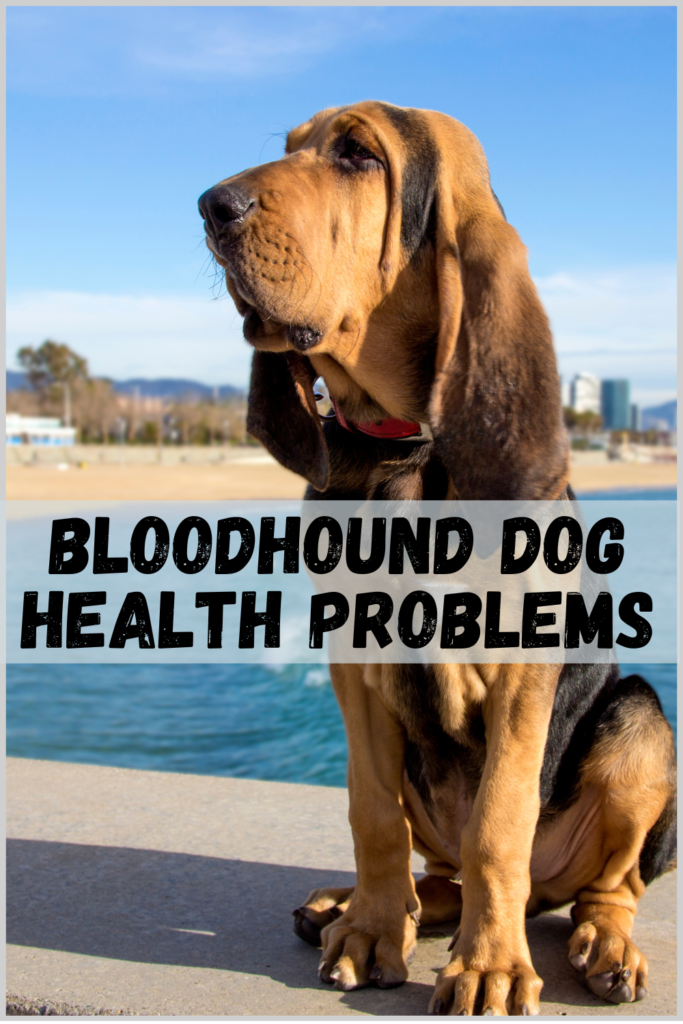
5 Severe Dog Food Allergy Symptoms To Always Look Out For
Have you noticed any behavior or symptoms in your adult dog after they eat? Are you wondering if these are dog food allergy symptoms? Your pet may be having a reaction to their food. It’s important to be able to identify the signs of allergies whether they are caused by their food or other allergens to maintain your pet’s health and well-being. In this blog post, we will discuss indications of food allergies in dogs. Provide helpful tips on how to effectively manage and treat these allergies. If you suspect that your dog might have a food allergy keep reading to learn more about recognizing and addressing this issue.
This post is about recognizing dog food allergy symptoms!
What are Dog Food Allergies?
Dog food allergies can cause discomfort and distress for both your pet and for you. Having an understanding of the signs and causes of these food allergies can assist dog owners in providing care for their pets. In the next section, we will explore the allergens found in dog food and distinguish between food allergies and intolerances in dogs.
Please note, that while there are types of allergies such as contact or flea/insect allergies, our focus today will be, on food allergies.
Common Allergens
When it comes to dog food allergies, there are ingredients commonly found in pet foods that can be the culprits. These include proteins like beef, chicken, and pork, and dairy products as grains such as wheat, corn, and soy. Additionally, some dogs may have sensitivity towards preservatives, dyes, or fillers often used in commercial dog food. It is crucial to identify and remove these allergens from your dog’s diet to effectively manage and prevent reactions.
Difference Between Food Allergy and Food Intolerance
It is essential to understand the difference between food allergies and food intolerances in dogs. A food allergy occurs when the immune system reacts to an ingredient resulting in a reaction.
On the other hand, food intolerance typically arises from the difficulty of the digestive tract in breaking down certain components of the food properly. This can lead to problems that may resemble symptoms of a food allergy such, as vomiting, diarrhea, and gas.
While they share similarities, there are also allergy symptoms that do not occur with food intolerances (more information below!)
Understanding this distinction can greatly assist in addressing your dog’s sensitivities for their overall well-being.

Dog Food Allergy Symptoms
It’s crucial to be attentive, to your companion’s well-being and behavior, particularly when it comes to food allergies. Here are some indications to watch out for;
1. Itchy Skin & Paws
If your dog is constantly itching, or experiencing redness or hot spots on their skin, it could be an indication of a food allergy. You may observe increased scratching or licking. Keep an eye out for any rashes or hives, as well.
2. Digestive Problems
Digestive problems like diarrhea, vomiting, or excessive gas can suggest that your dog is having difficulties with their food. If you notice changes in their bathroom habits or any discomfort after eating, it might be worth investigating their diet for allergens.
3. Ear Infections
Frequent ear infections or ongoing ear irritation could be connected to food allergies. A lot of dogs often experience both ear infections and allergies together! If your dog frequently shakes its head or scratches its ears, it’s advisable to have them examined by a veterinarian to rule out any triggers related to food.
4. Respiratory Distress
Sometimes food allergies can cause issues, like coughing, sneezing, or wheezing in dogs. If you observe these symptoms along with other signs of allergies, it’s important to seek advice to determine the root cause.
5. Hair Loss
If you’ve noticed an increase in shedding by your dog it could be a sign of a food allergy. Typically due to skin itchiness, hives, or rashes, excessive hair loss occurs. If you find more hair than usual on the floor, it could be linked to a food allergy.
Some other subtle changes include heightened activity levels, weight loss, and decreased energy. In some instances, aggression may also be displayed.
You know your dog the best. Keeping an eye out for these warning signs and being proactive about investigating potential food allergies can help ensure your dog’s overall well-being and comfort.

How to Diagnose Dog Food Allergies
If you suspect that your puppy or adult dog is experiencing symptoms of a food allergy, it’s crucial to diagnose and identify the allergen. This can be achieved through an elimination diet.
What is the Elimination Diet?
An elimination diet is a process where you remove all potential allergens from your dog’s food and then gradually reintroduce them to identify any reactions. To begin, feed your dog a combination of protein and carbohydrates that they have never had before, such as venison and sweet potatoes. It’s crucial to ensure that this diet doesn’t contain any ingredients they have previously consumed. Keep them on this diet for at least 2 weeks, making sure they don’t consume any other foods not accounted for. By doing this, you can evaluate if their symptoms improve. If there is improvement, you can then reintroduce their diet to see if the symptoms return.
Why we DON’T recommend allergy blood testing?
Allergy testing can be done through blood tests or intradermal skin testing. Blood tests look for specific antibodies to certain allergens. For many years, there was no evidence to prove that they were effective or not. Veterinarians sometimes suggested this as a faster option for diagnosing a food allergy as a faster method compared to an elimination diet. Many said there was also no evidence to say they didn’t work.
However, in 2019, this was disapproved. One study in Europe showed that 53% of ‘clinically healthy research dogs’ had at least 1 positive reaction, and had similar results to those diagnosed with a food allergy.
Then, here’s the surprising part that should definitely make you question blood testing, there was another study done with 30 ‘healthy client-owned’ dogs, that showed that there were many positive results for food allergies (even when none of them were diagnosed with a food allergy to begin with!!)
Fortunately, blood testing for allergies is not recommended among veterinarians and dog lovers anymore. Though they seem to be a faster way of diagnosis, the accuracy of these tests is just not there.
By utilizing both the elimination diet, you can accurately diagnose your dog’s food allergies, paving the way for an appropriate treatment plan. However, always consult your veterinarian before making any drastic changes to your dog’s diet.

How to Treat Dog Food Allergies
Food allergies in dogs can cause discomfort, and be the doorway to other health issues. It’s crucial to address these allergies to ensure your pet’s well-being. Here are some effective ways to treat allergy symptoms:
Switching to a Hypoallergenic Diet
One helpful approach is transitioning your dog to a hypoallergenic diet. These specialized diets are designed to minimize the chances of triggering reactions Look for limited-ingredient diets that exclude allergens like beef, chicken, dairy, and grains. Instead consider protein sources such as venison, duck, or salmon and carbohydrates like potatoes or peas. It’s important to introduce the diet slowly so that your dog’s system can adjust over time.
Make sure to check for a statement that says is ‘complete and balanced’, and check the ingredients label for what are the primary ingredients, what are the protein sources, and what are the carbohydrate sources, etc.
Veterinary diets like Hill’s, Royal Canin, and Purina ProPlan also have many dog food options specific to allergies. However, please PLEASE do your research on this. From the little digging I did, it seems like maybe the ingredient list on some of these brands is not optimal.
Allergy Relief Medications
In cases of severe allergies, your veterinarian may recommend medications such, as antihistamines and corticosteroids. These can help alleviate itching and inflammation caused by food allergies.
In addition, veterinarians may prescribe drugs to regulate the response. It is crucial to follow your vet’s instructions when administering medications to your dog.
Natural Remedies and Supplements
To complement the dietary changes and medications, natural remedies and supplements can offer supplementary relief. Omega-3 fatty acids derived from fish oil can help reduce inflammation and support overall skin health. Probiotics and digestive enzymes may aid in promoting healthy gut flora and supporting the digestive system, potentially reducing allergic reactions. Consult your veterinarian to determine the most suitable natural remedies and supplements for your dog’s specific condition.
Some common allergy skin symptom relief supplements:
Native Pet Allergy Air-Dried Supplement: Great ingredients like colostrum, spirulina, and postbiotics
PetHonesty Allergy Support: Great ingredients, all-natural
Another option unrelated to food is to try itch-relief shampoo. There are many options ranging from all-natural to medicated shampoos. This should be researched and assessed based on your pup’s specific needs.
Effectively addressing dog food allergies requires an approach that combines adjustments, medications and natural remedies in order to manage and alleviate allergic symptoms effectively.
It is essential to collaborate with your veterinarian in order to create a customized treatment plan that addresses the needs of your dog and promotes their overall well-being.

How to Prevent Dog Food Allergies
When it comes to ensuring your dog’s health, prevention plays a role. By being mindful of the ingredients in your dog’s food, you can help prevent food allergies and maintain their good health for years to come. Here are a few tips to consider:
Reading Labels and Ingredients
Before buying any dog food, take a moment to read the labels and understand the ingredients. Look for high-quality options that are hypoallergenic and have meat as the main ingredient. Avoid products that contain colors, flavors, or preservatives as they have the potential to trigger allergies in your dog.
Gradual Diet Changes
When transitioning your dog to food or introducing ingredients, it is important to do it gradually. Sudden changes in their diet can disrupt their system. Mix portions of the food with their current diet, over one or two weeks allowing their system enough time to adapt.
By being mindful of the ingredients, in your dog’s food and gradually making changes, you can greatly reduce the chances of your pup developing food allergies and contribute to their overall well-being.
Conclusion
In conclusion, it is crucial to identify dog food allergy symptoms in both puppies and adult dogs for their well-being, health, and happiness. By observing your pet for specific signs, you can detect food allergies at an early stage.
If you suspect that your dog may have a food-related allergy, the next few steps can be time-consuming and painstakingly slow with no diagnosis. Although implementing an elimination diet may seem like a process, it will be beneficial for your dog’s health and overall wellness for years to come!
Consulting with a veterinarian is important to determine the immediate plan of action and make any dietary adjustments. Remember that a nutritious diet plays a HUGE role in ensuring your dog’s health. Do it for your best friend! <3



